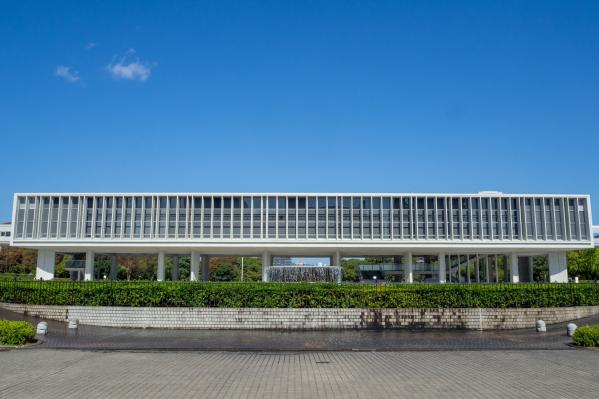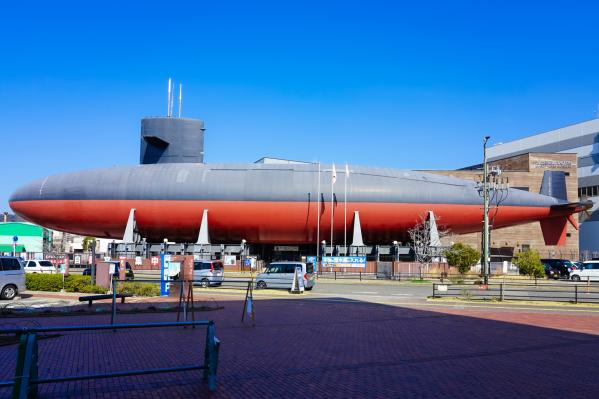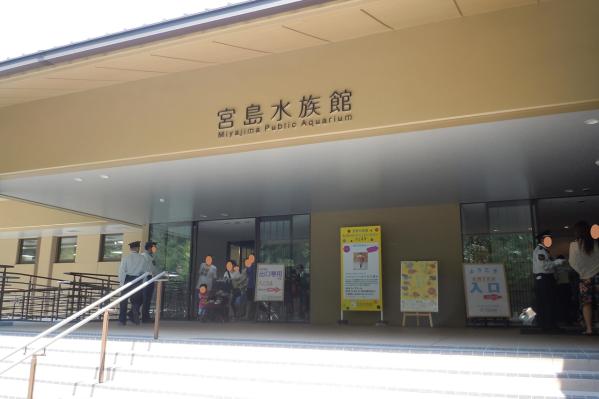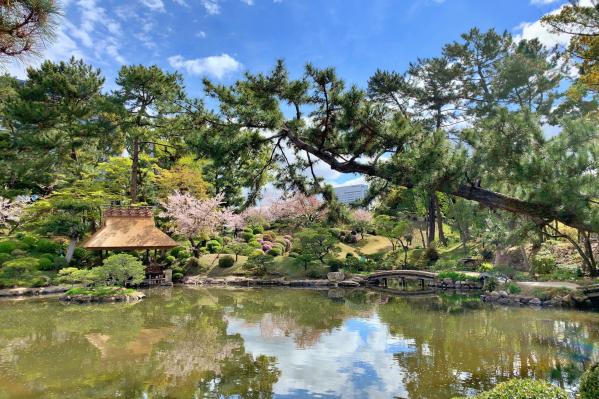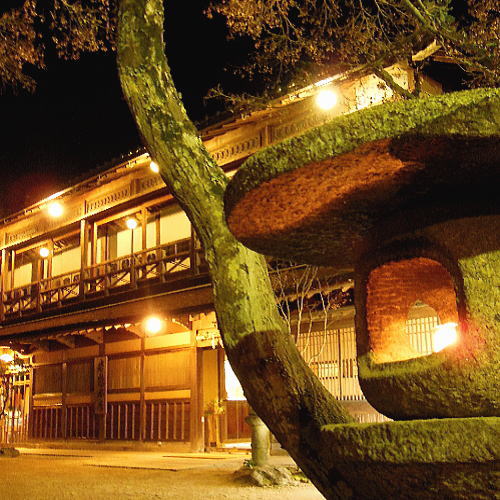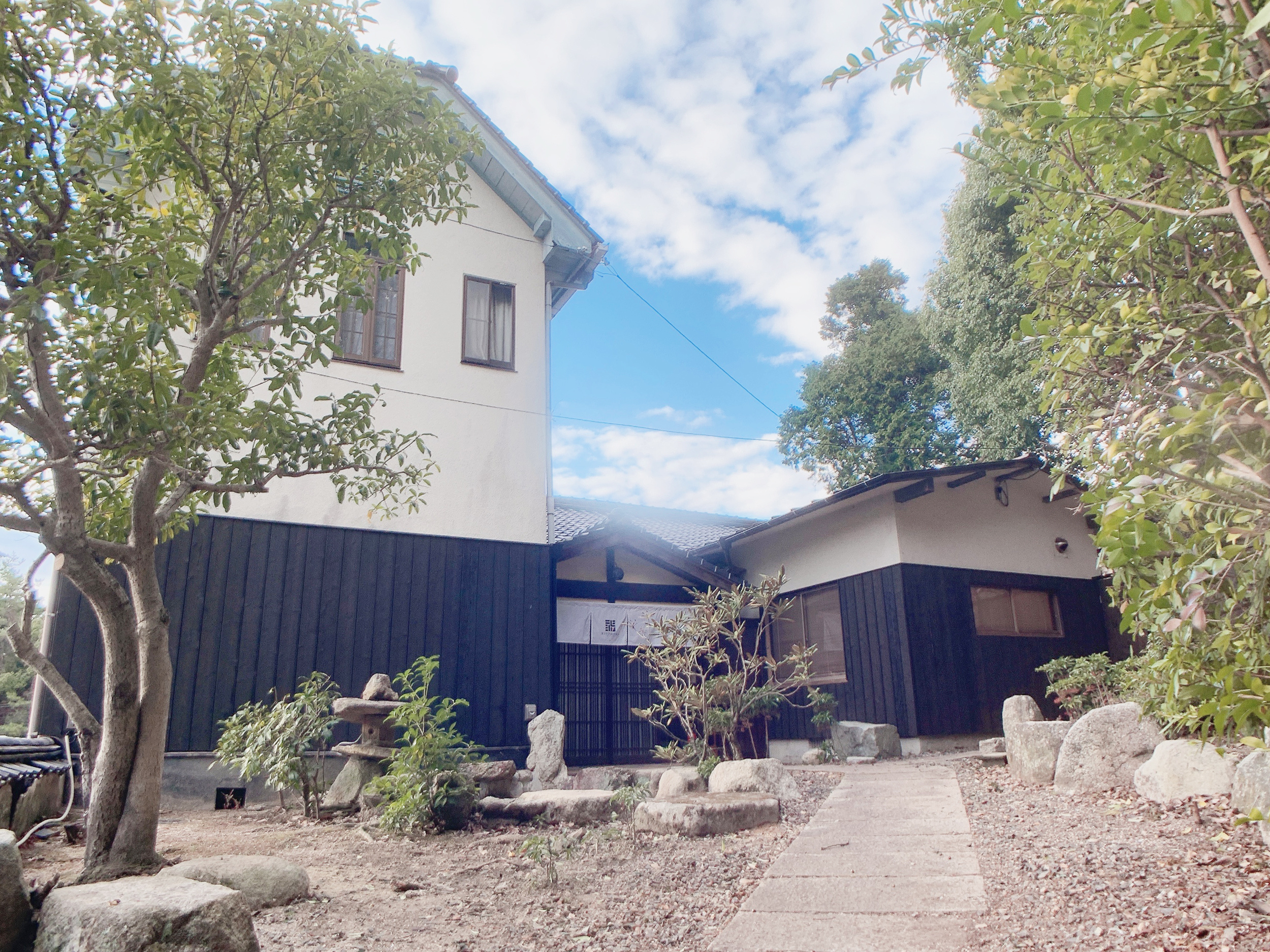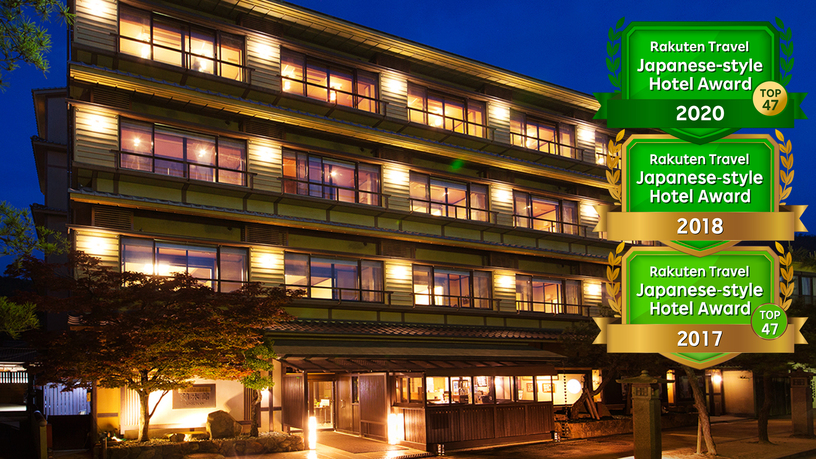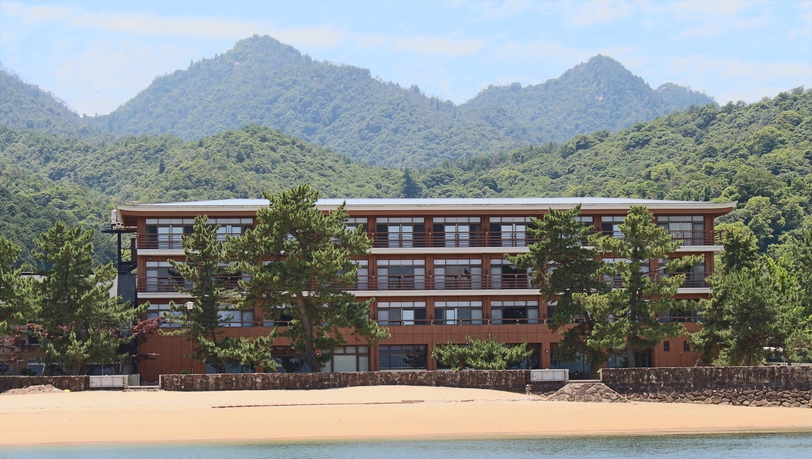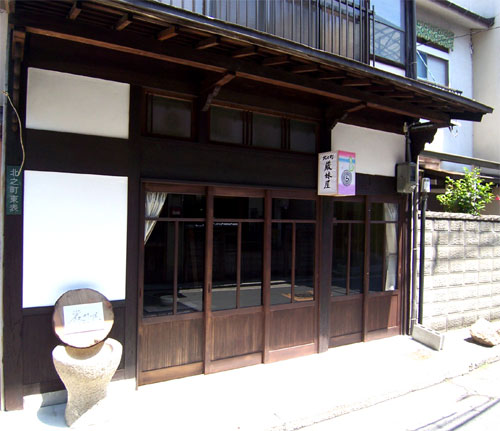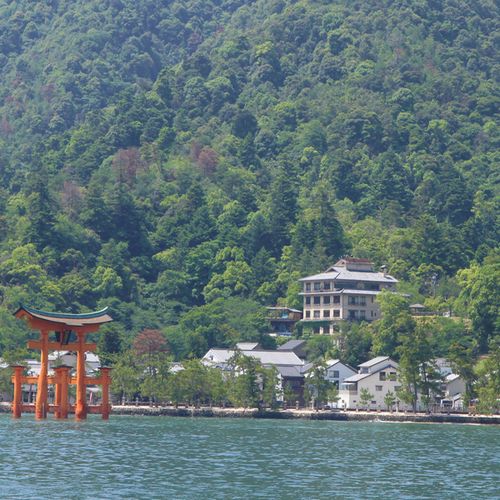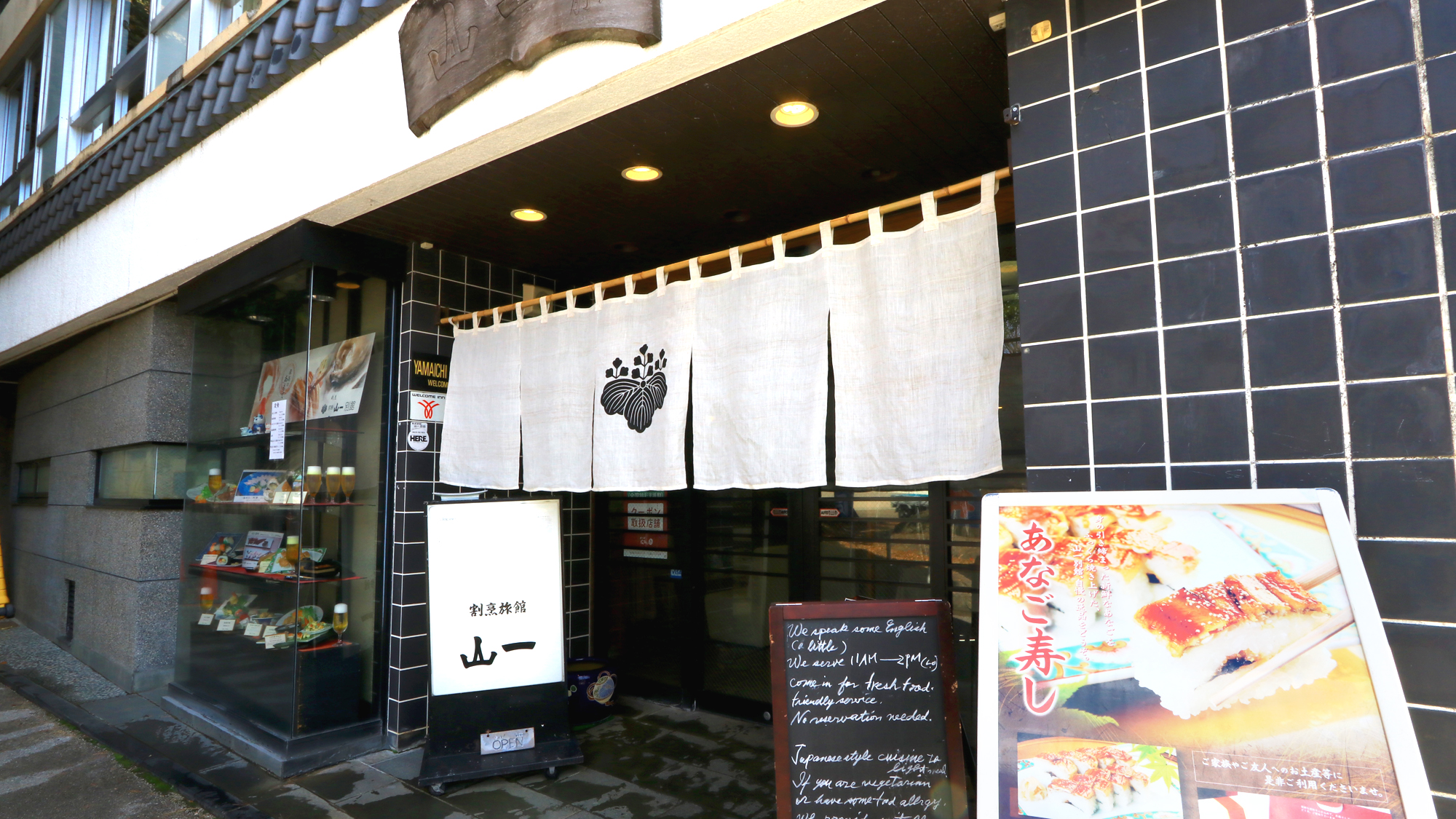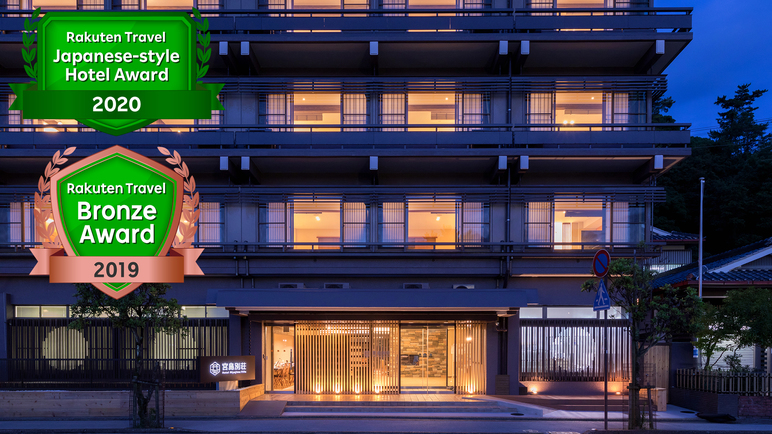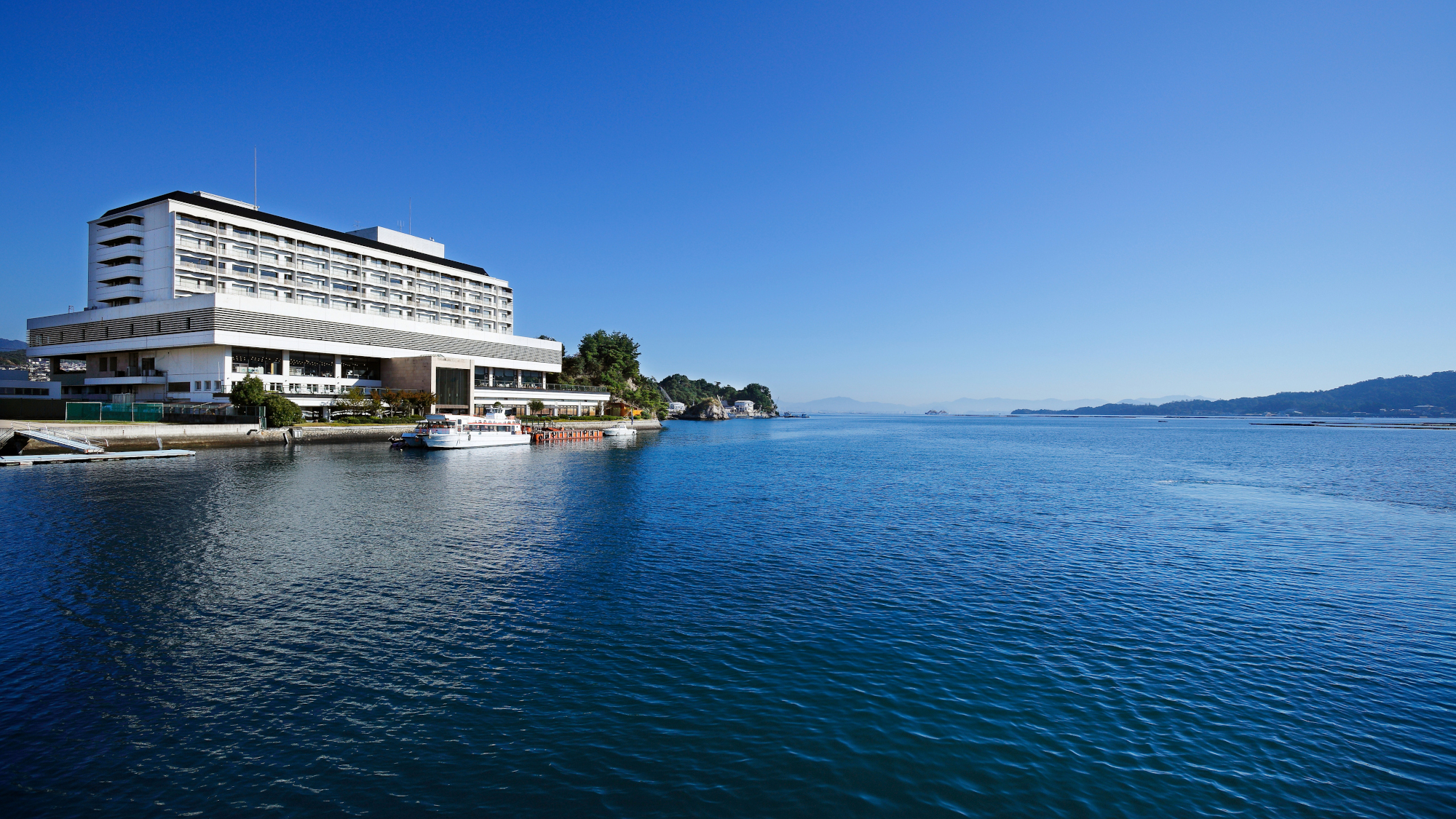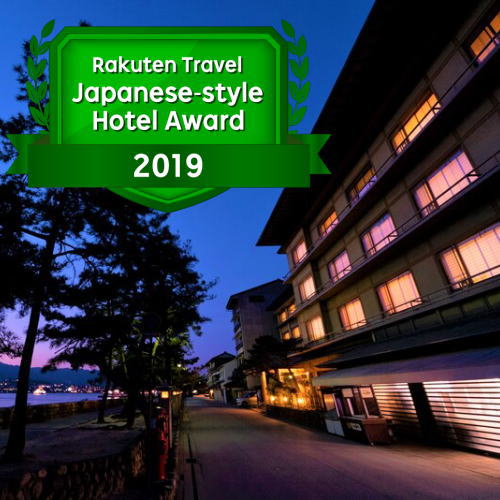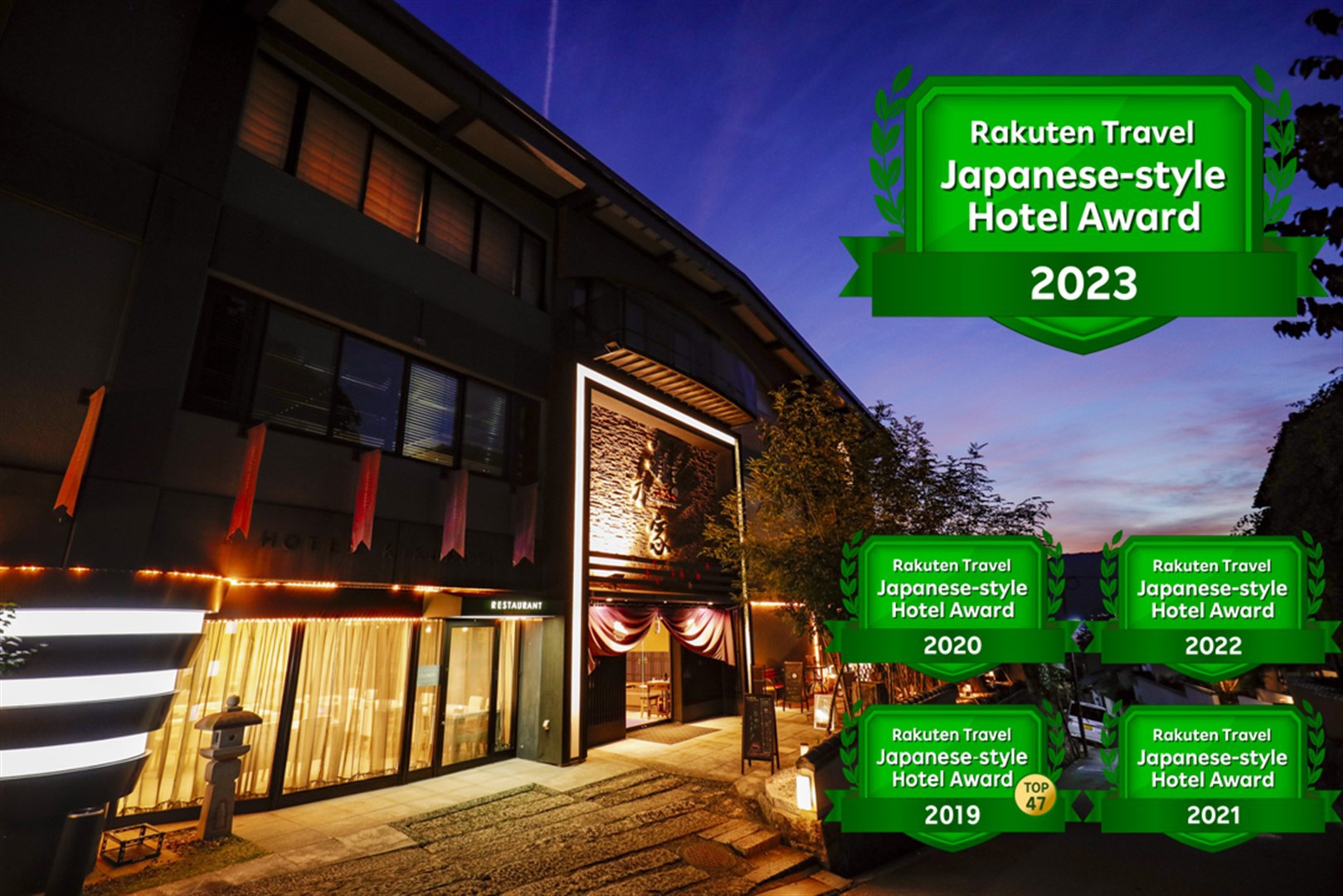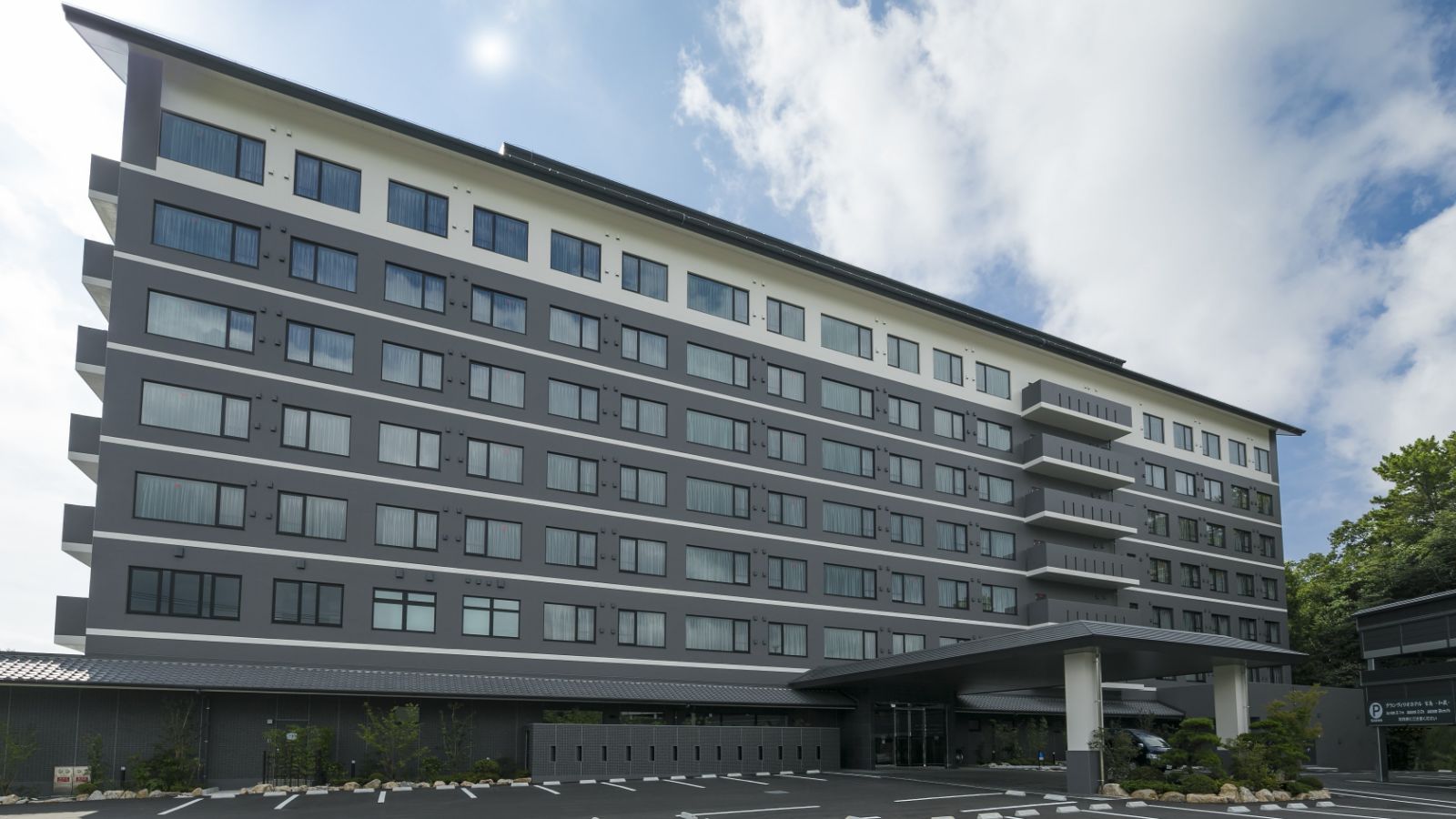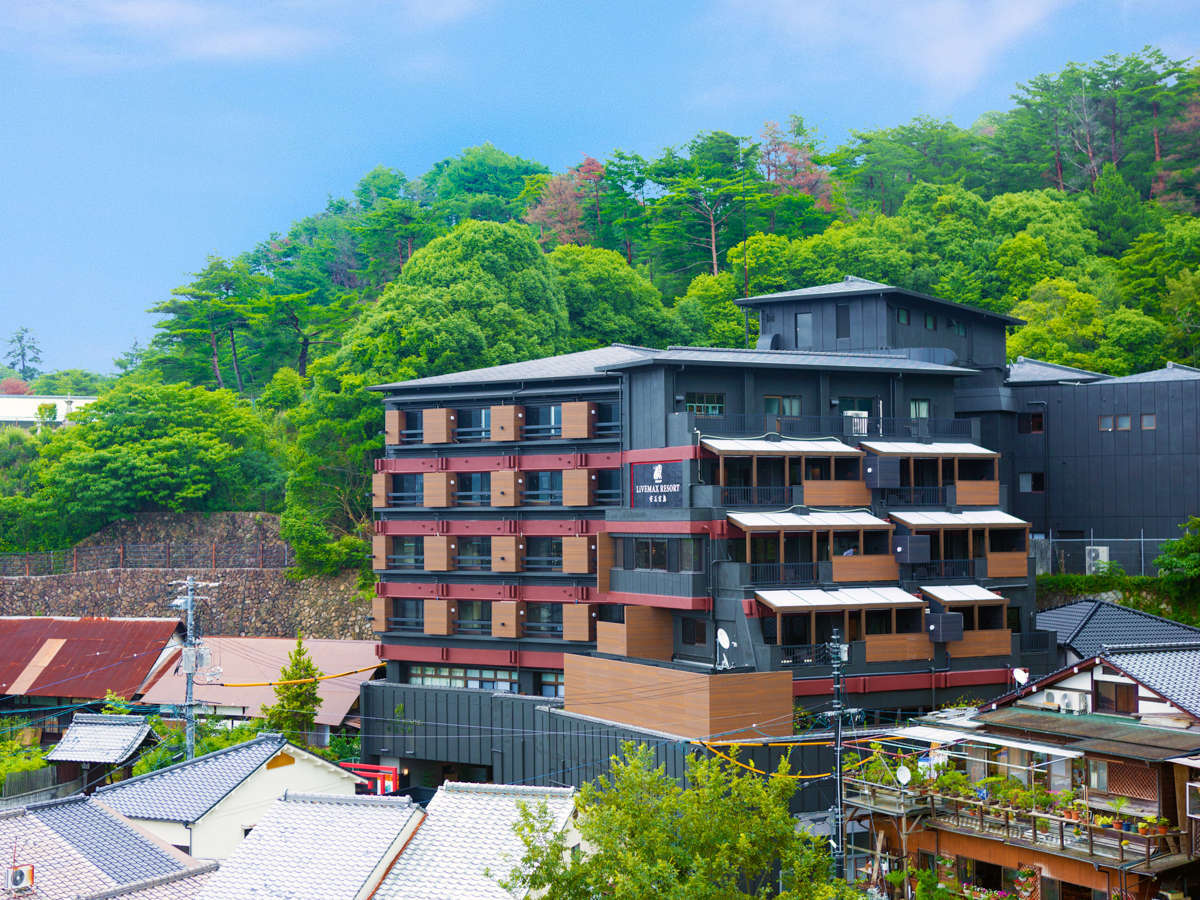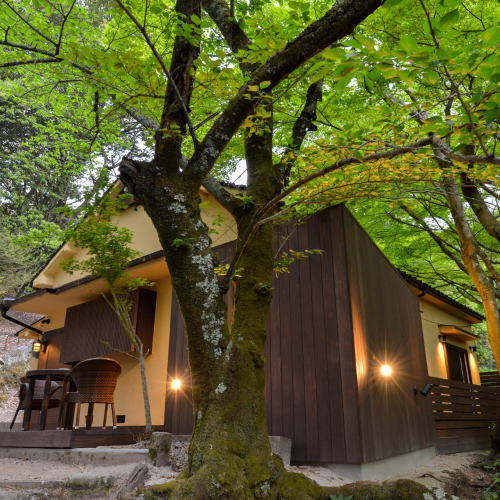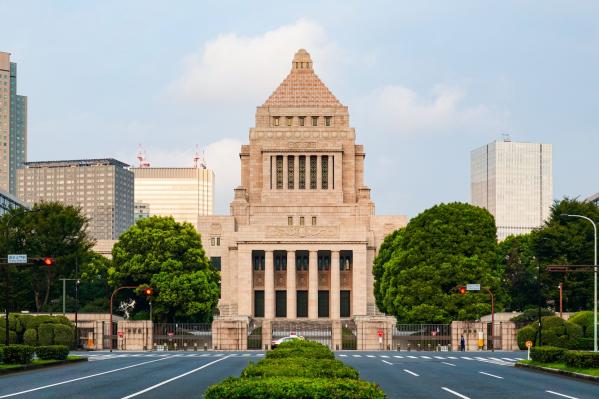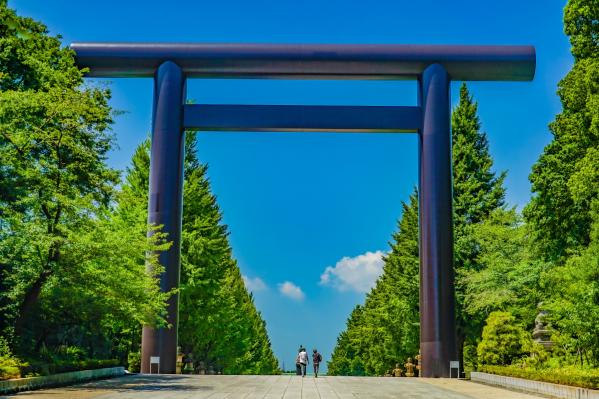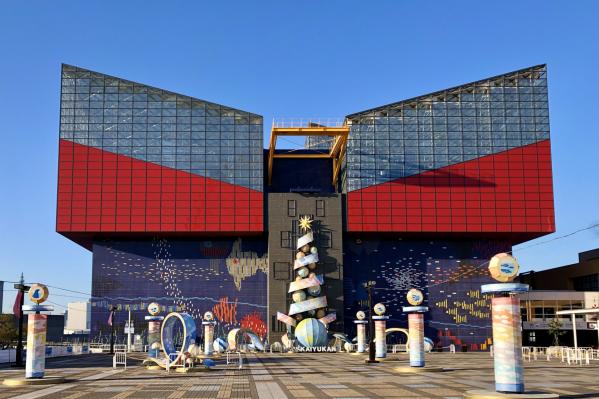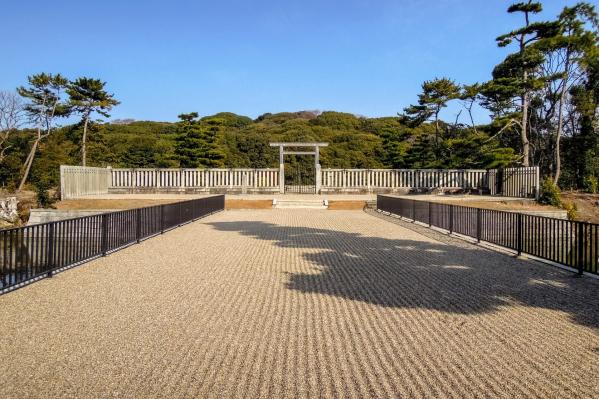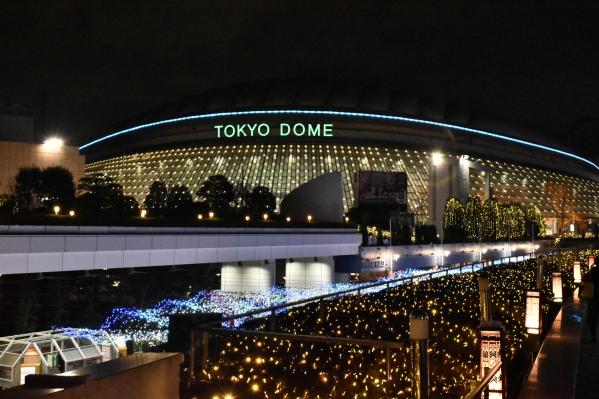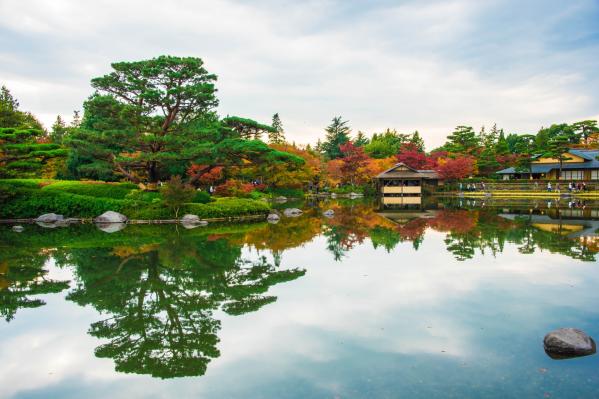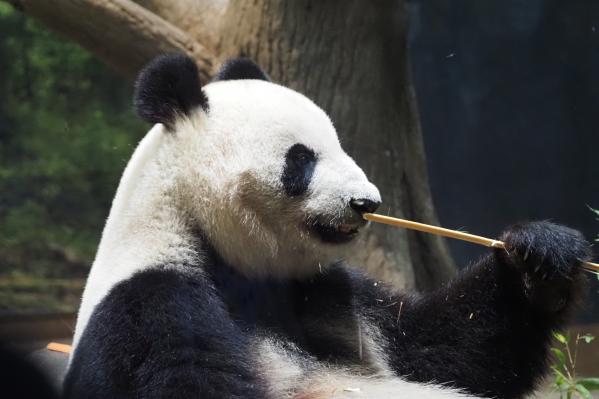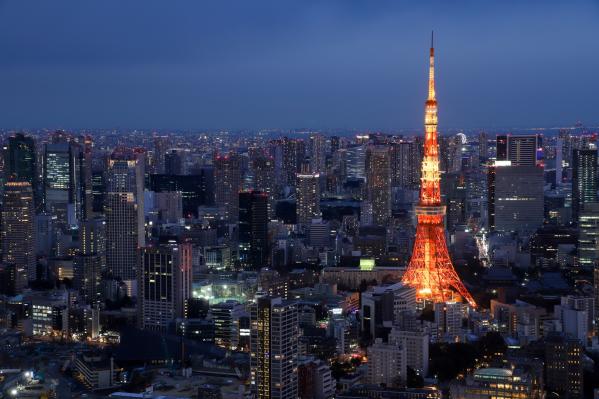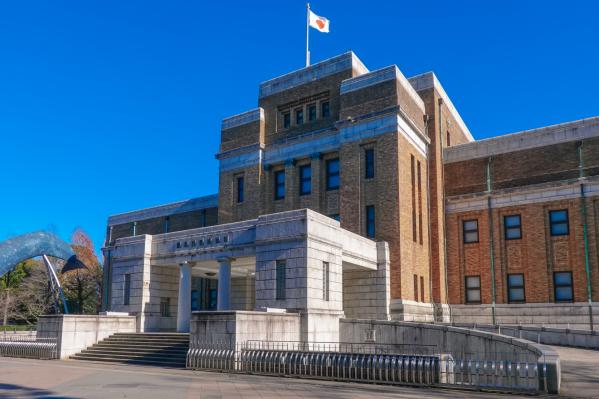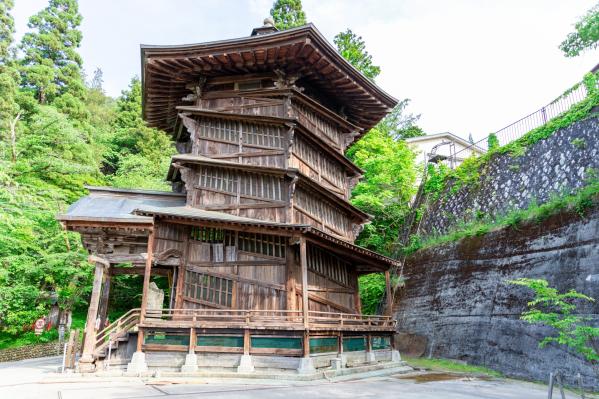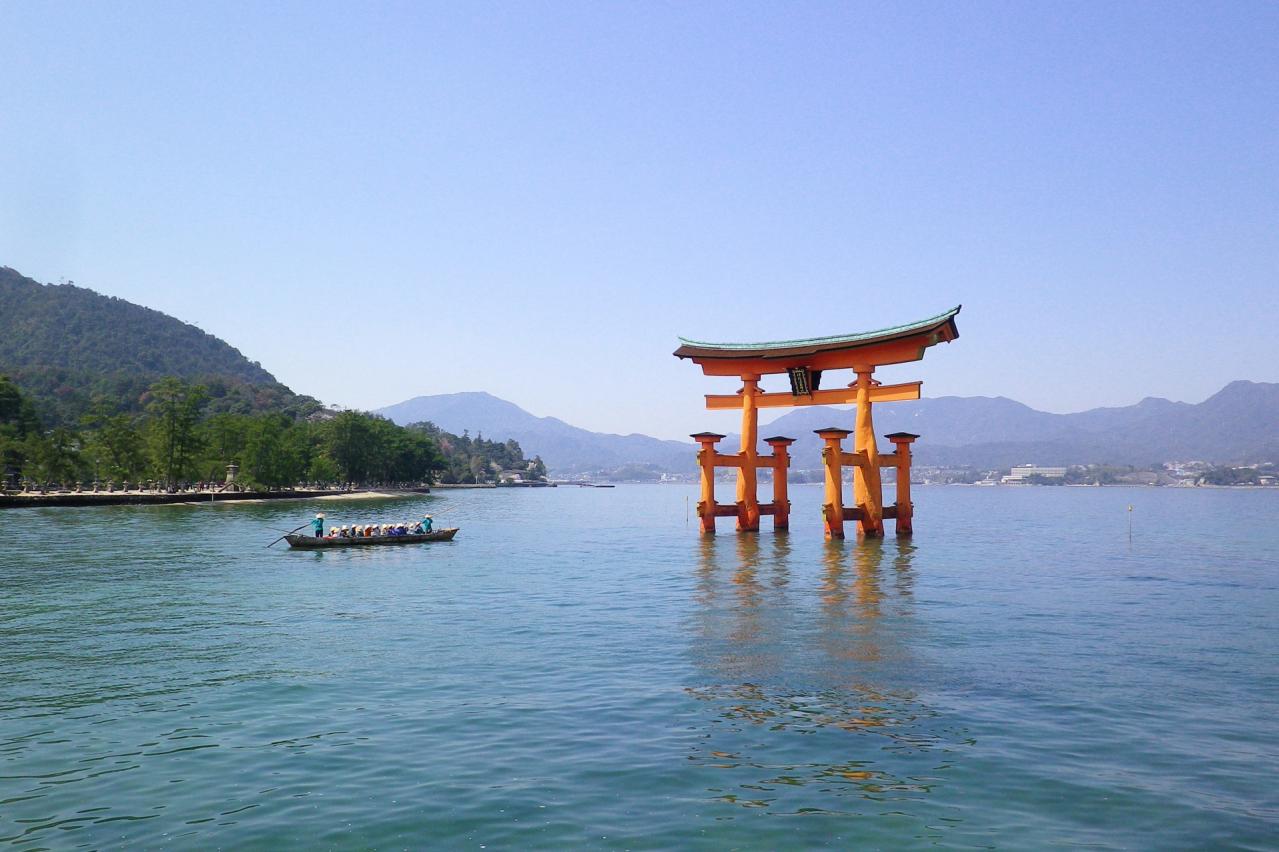
Itsukushima Shrine
The shrine is dedicated to the deities Amaterasu Omikami and Susanoo no Mikoto, who appeared during the divine oath taken on the sacred sword in Takama-ga-hara. They are worshipped as protectors of the nation and guardians of the seas, with prayers for the stability of the imperial family.
The architecture of Itsukushima Shrine boasts an original and bold arrangement and represents the pinnacle of Heian-period shinden-zukuri style. It was rebuilt in its current form by Taira no Kiyomori and has since been revered by many members of the imperial family and nobility. Notably, the vibrant vermilion of the shrine buildings contrasts beautifully with the blue sea and green mountains, creating a stunning landscape.
Additionally, the shrine is constructed on a gently sloping beach, offering beautiful views that make it seem to float on the water during high tide. Numerous important cultural assets and art crafts, including national treasures, remain in this shrine, underscoring its immense historical and cultural value.
Itsukushima Shrine is a place where Japan's religion, architecture, culture, and natural beauty are perfectly harmonized, providing mystical and moving experiences for visitors.
Basic Information
- Spot Name
- Itsukushima Shrine
- Location
- 〒739-0588 1-1 Miyajima-cho, Hatsukaichi City, Hiroshima Prefecture
- Access
- By Train:
JR West Japan - Miyajimaguchi Station
Hiroshima Electric Railway - Hiroden Miyajimaguchi
By Ferry:
From Miyajimaguchi Pier to Miyajima Pier (approximately 10 minutes)
By Walking:
Entrance to the Shrine
By Car:
From Sanyo Expressway - Hatsukaichi IC to Miyajimaguchi (approximately 15 minutes)
From Sanyo Expressway - Ono IC to Miyajimaguchi (approximately 15 minutes)
*Traffic conditions during weekends and holidays may vary. - Parking
- No parking available.
- Business Hours
- January 1: 00:00 AM - 6:30 PM
January 2 - January 3: 6:30 AM - 6:30 PM
January 4 - End of February: 6:30 AM - 5:30 PM
March 1 - October 14: 6:30 AM - 6:00 PM
October 15 - November 30: 6:30 AM - 5:30 PM
December 1 - December 31: 6:30 AM - 5:00 PM - Fees
- Adults: 300 yen and up, High school students: 200 yen and up, Elementary and middle school students: 100 yen and up.
- Contact Information
- Phone Number:0829-44-2020
- Official Website
Map
Detailed Information
▶National Treasure / Important Cultural Property
It is said to have been founded in the first year of Empress Suiko (593) by Saeki Kuramoto. There are various theories, but deriving from the meaning "a god to be worshiped in Itsukushima Island," it has been referred to as "Itsukishima God" or "Gojima Shrine," and it is currently known as "Itsukushima Shrine." Due to the lingering elements of primitive religion, the entire island was revered as a sacred island, and since it was deemed inappropriate to build the shrine on land, it was constructed in a place where the tides ebb and flow. In the second year of Kwan'an (1146), Taira no Kiyomori was appointed governor of Aki and revered it as the guardian deity of the Taira clan, leading to the shrine's increased prominence as the power of the Taira family grew, and the current shrine buildings were constructed. Members of the imperial family and nobility, including Emperor Go-Shirakawa, Kenjunmon-in, and Takakura Emperor, came from the capital, bringing cultural and architectural influences from the capital to Miyajima. The traditional Bugaku (court music and dance) performed at Itsukushima Shrine was moved from Osaka's Shitennoji by Kiyomori. The shrine has undergone reconstruction several times due to disasters but is said to reflect the appearance from Kiyomori's time. There are approximately 260 items classified as National Treasures and Important Cultural Properties, including 17 buildings and 55 art crafts. The east corridor has 45 bays, while the west corridor has 62 bays. In addition to the main shrine, there are structures such as the Guest Shrine, Asazaya, Harai-den, Takabutai, Hirabutai, Right and Left Gate Guest Shrines, Hiakimura, Okuni Shrine, Tenjin Shrine, Noh stage, Sorihashi, Nagahashi, and Agemizubashi. The entrance of the east corridor has a gabled roof, while the west corridor entrance features a karahafu roof. The corridor is approximately 4 meters wide and 260 meters long, with a spacing of about 2.4 meters (8 shaku) between columns, and eight floorboards laid in one bay. The gaps between the floorboards serve to reduce the pressure of seawater pushing up from below during high tides and help drain seawater that becomes trapped in the corridor. Currently, protective boards are laid over the floorboards, which are originally part of the National Treasure, allowing visitors to walk on them with shoes.
▶Corridor [Kairo] National Treasure
The east corridor contains 47 bays (distance between columns, with one bay measuring approximately 2.4 meters), with a gabled entrance and a hinoki bark roof, topped with ridge tiles. The west corridor consists of 61 bays, with a karahafu design at the west end (exit), suggesting that the entrance used to be on the west side. Together, the east and west corridors stretch approximately 260 meters, with hanging lanterns suspended between each bay. Eight boards are laid within one bay, and nails are not used. The gaps between the boards are designed to dissipate wave energy during high tides or typhoon conditions, thus protecting the building (slit structure). Nails are not used in this flooring. The floor consists of two layers, where the original floorboards lie beneath, and the upper layer consists of protective boards, allowing visitors to walk on them with shoes. This change occurred in recent years, as it was customary in the past to remove shoes before entering the shrine. The hanging lanterns in the corridor are said to have originated from iron lanterns presented by the Mori clan, with current ones being bronze ones donated during the Taisho era.
▶Guest Shrine [Maroudou Shrine] National Treasure: Heian Period
Like the main shrine, it consists of a main hall, offering hall, worship hall, and purification hall. The ceremonies of Itsukushima Shrine commence here. It enshrines five male deities: Amenoshihomimi, Ikitsuhiko, Amenohohimimi, Amatsuhikone, and Kumano Kusuhimi. It is the largest among the subsidiary shrines, and during the shrine's festivals, the priests offer their prayers here first. Amenoshihomimi is the eldest child of Amaterasu and is the deity of agriculture. Amenohohimimi is also a deity of agriculture and the child of Amaterasu. Amatsuhikone is revered as the god of the sun, god of rain, god of wind, and god of fire prevention. The sea protection board on the seaside of the purification hall is said to be a remnant of the entrance for descending to the water.
▶Mirror Pond [Kagami no Ike] One of the Eight Scenic Views of Itsukushima
Located in the sea under the eastern corridor of the shrine, a round pond appears when the tide recedes.
*Eight Scenic Views of Itsukushima: In 1715, selected eight scenic spots of Itsukushima by the monk Yoshishin of Kōmyō-in.
▶Asazaya [Asazaya] National Important Cultural Property
The roof features a gabled design to the east and irimoya to the west, with eaves on three sides, showcasing characteristics of paired buildings from the sleeping palace style. In the past, this was where shrine families, priests, and court ladies gathered during ceremonies and meetings.
▶Masugata [Masugata]
The area surrounded by the purification hall of the Guest Shrine and the corridor is called Masugata. During the "Kangen Festival," held annually on June 17 of the lunar calendar, the ceremonial boats and tugboats from Aga and Eba make three rotations around here. It is a space where many guests gather in the corridor to witness the climax of the Kangen Festival.
▶Agemizubashi [Agemizubashi] National Important Cultural Property
A notable feature is the central projection called "San no Ma," believed to be where a ceremony for drawing up tides was held.
▶Sotobai Stone [Sotobaiishi]
Under the Agemizubashi lies the Mirror Pond, and within it, there is a stone referred to as the Sotobai Stone. Approximately 800 years ago, Taira no Kiyomori, who conspired against the Heike clan in Kyoto, was exiled to Kikaigashima, and he wrote two poems on a thousand Sotobai pillars to remember his aged mother living in Kyoto; one of them washed ashore at this stone.
"I wonder if it is a journey to return for a while, yet the hometown still longs for me."
"I am on a small island off Satsuma’s coast; tell my parents about this, oh, the many sea breezes."
It is said that a monk visiting Itsukushima Shrine conveyed this to the capital, and shortly after, Kiyomori was granted permission to return, according to the Tale of the Heike.
▶Kiyomori Lantern [Yasuyori Tourou]
This lantern, dedicated by Taira no Kiyomori upon his return to the capital, is the oldest within Miyajima.
▶Naishibashi [Naishibashi] National Treasure
The shrine maidens serving at Itsukushima Shrine were called Naishi. It is said that in the past, they crossed this bridge to offer food to the deity, hence the name Naishibashi. There is one on either side of the worship hall and main hall.
▶Main Shrine [Gohonsya] / Worship Hall [Haiden] / Purification Hall [Haraiden]
The main shrine is designated as a National Treasure, with the enshrined deities being Ichikishimahime, Tagorihime, and Tagitsuhime, the three Munakata goddesses. In addition to the three goddesses, 30 other deities are enshrined here. It is reported to have a front width of 8 bays, rear width of 9 bays, and a depth of 4 bays, with a total floor area twice that of Izumo Taisha. The three goddesses are worshipped as goddesses of the sea, transportation, wealth, and arts. Taira no Kiyomori pacified the pirates of the Seto Inland Sea, controlled the maritime industry, and amassed great wealth through trade with the Song dynasty, swiftly rising through the ranks. He held a deep devotion to Itsukushima, a critical point on the Seto Inland Sea route, praying for the safe passage of trading vessels between Setouchi and the Song dynasty. Until the Meiji Restoration, Benzaiten was also worshiped here, but according to the Shinto-Buddhist separation law, it is now enshrined at Daiganji. The purification hall is where offerings to the deities are made. The worship hall is a facility for worshipers to face the deities for purification and prayer. Looking up from under the worship hall reveals two roof ridges, all covered by a single roof. This architectural style is called "Sanmunezukuri," said to be from the Nara period. The distance from the Great Torii is said to be 108 bays (approximately 196 meters). The purification hall is where purification occurs and where the portable shrine (Goshin) is placed during the Kangen Festival, also utilized for Bugaku performances in case of rain. In the 16th year of the Showa era, rice trading was conducted here until state control of the rice market began. The flooring includes cypress wood that was used for the Asano clan's ship, Itsukushima Maru, during the Meiji era.
▶Takabutai [Takabutai] National Treasure: Heian Period
This is the stage where Bugaku is performed. Bugaku refers to the dance accompanied by music, consisting of numerous pieces, including Ryo-o, Shinkō, Banzai-dance, Engi, Taihei, and others, still performed at Itsukushima Shrine today. This stage was dedicated by Tanamori Saeki Fusaaki in the 15th year of Tenbun (1546) and is said to be among Japan's three renowned stages, alongside the stone stage at Shitennoji and Sumiyoshi Taisha.
▶Hirabutai [Hirabutai] National Treasure
In contrast to the Takabutai, the flat stage is referred to as Hirabutai. In the sleeping palace architecture, it relates to the courtyard, with shims made of Akkamishi, said to be contributed by Mouri Motonari.
▶Right Gate Guest Shrine [Mikigadomaroji] / Left Gate Guest Shrine [Hidakadomaroji]
National Treasure
These are located on either side of the Hiakimura, with their enshrined deities being Toyoiwamadonokami and Kushiiwamadonokami. They suffered significant damage during Typhoon No. 19 in Heisei 3 and Typhoon No. 18 in Heisei 16, along with the Noh stage, Takabutai, and Hirabutai.
▶Right Music Room [Ugakubou] / Left Music Room [Sagakubou] National Treasure
These are music rooms used during Bugaku performances. Although they are located on both sides, the Bugaku has two distinct styles; the left dance derived from India and Tang and is performed in the left music room, while the right dance, originating from Manchuria and the Korean Peninsula, is performed in the right music room. Bugaku was transmitted from Shitennoji by Kiyomori approximately 820 years ago and can be seen at Itsukushima Shrine.
▶Okuni Shrine [Okunijinjya]: Daikoku Shrine National Important Cultural Property
Commonly known as Daikoku-san, it enshrines Okuninushi, the god of nation-building, agriculture, commerce, medicine, and marriage. It is said to be positioned close to the main shrine because Okuninushi is married to Tagorihime. To the right of the slightly elevated worship hall lies the former temporary site for offerings, where offerings transported from the Gokusho behind the main shrine were placed before being carried on to the main hall by shrine maidens.
▶Tenjin Shrine [Tenjinsya] National Important Cultural Property: The enshrined deity is Sugawara no Michizane, the god of academic achievement. It was founded in the second year of Kōji (1556) through a donation by Mouri Takamoto. Like the Noh stage, it is made from unpainted wood, making it one of the newer structures among the shrine complex. In the past, it was referred to as a renka-dō, where monthly poetic gatherings were held until the early Meiji era.
▶Nagahashi [Nagahashi] National Important Cultural Property: Momoyama Period
Measuring 33 meters in length and 3 meters in width, with piers made from Akkamishi. It was used for carrying offerings from the Gokusho behind the main shrine. The use of Akkamishi for shim stones is said to be contributed by the Mori clan. The Meiji-era explorer Matsuura Takeshirou (1818-1888) was devoutly devoted to the Tenjin faith, visiting 25 Tenjin shrines nationwide and donating a stone monument and mirror called "Seiseki 25 Bai." There is a stone monument dedicated in Meiji 17 (1884) on the Land side of Nagahashi in Itsukushima Shrine. Matsuura Takeshirou is known for naming Hokkaido.
▶Sorihashi [Sorihashi] National Important Cultural Property
Also known as Chokushi Bridge or Taiko Bridge, it is approximately 24 meters long and 4 meters wide, with a red lacquer guardrail and black-painted piers. It existed as early as the Kamakura period, yet the present structure was reconstructed in the third year of Kōji (1557) by Mouri Motonari and Takamori. It was also known as Chokushi Bridge, as only envoys (Chokushi) from the Emperor were permitted to cross this bridge. It is believed that a stairway was provided in the middle for crossing.
▶Noh Stage [Noubutai] National Important Cultural Property: Gabled design and hinoki bark roof
In the 11th year of Eiroku (1568), the Mouri clan invited Kanze Tayu to set up a temporary Noh stage in the sea, where Noh was performed. The current building was renovated in the 8th year of Enpou (1680) by the Hiroshima domain lord Asano Tsunanaga and is newer in construction without lacquer like Tenjin Shrine. Its unique feature is that it is the only stage built in the sea in Japan. The gabled design has independent flute pillars. Typically, pots are placed under the flooring for resonance, but none are present due to its location in the sea. Instead, the underfloor beams are triangular, and floorboards are laid over them to amplify the resonance. The annual Momohanasai Shinnou festival is held from April 16 for three days, where performances commence with the deity on the first and second days, interspersed with Kyogen, showcasing authentic performances dating back to the Edo period. This stage collapsed during Typhoon No. 19 in Heisei 3, but was rebuilt in Heisei 6 using as much of the old timber as possible.
Itsukushima Shrine Movies
Hiroshima Tourist Attractions
View ListHiroshima Peace Memorial Museum
The Hiroshima Peace Memorial Museum was opened in 1955 with the aim of conveying the realities of the damage caused by the atomic bomb in Hiroshima to the world, and...
Yamato Museum (Kure Maritime Museum)
The Yamato Museum (Kure Maritime History and Science Museum) is a museum that introduces the history of Kure City, which thrived as a military port where the battles...
Kaijouji Eitaikurashiryoukan (Tetsu no Kujirakan)
Kure Maritime Museum (commonly known as the "Museum of Iron Whale") is the only museum in Japan where you can enter an actual submarine. Here, the submarine "Akishio...
Miyajima Aquarium
Miyajima Aquarium is one of the leading aquariums in the Chugoku region, featuring about 350 species and over 13,000 specimens primarily from the Seto Inland Sea. It...
Shukkei-en Garden
Shukkeien Garden is a daimyo garden built in 1620 as a retreat for the Hiroshima feudal lord, Asano Nagamasa, by his tea-master retainer, Ueda Soko. It is known to h...
Hiroshima Castle
Hiroshima Castle, known for its beautiful main keep built by Mori Terumoto in 1589, is also referred to as "Rijou" (Carp Castle). After the Battle of Sekigahara, the...
Hiroshima Peace Memorial (Genbaku Dome)
The Atomic Bomb Dome is a UNESCO World Heritage Site located in Hiroshima City, and it is a building that was damaged by the first nuclear weapon used in human histo...








